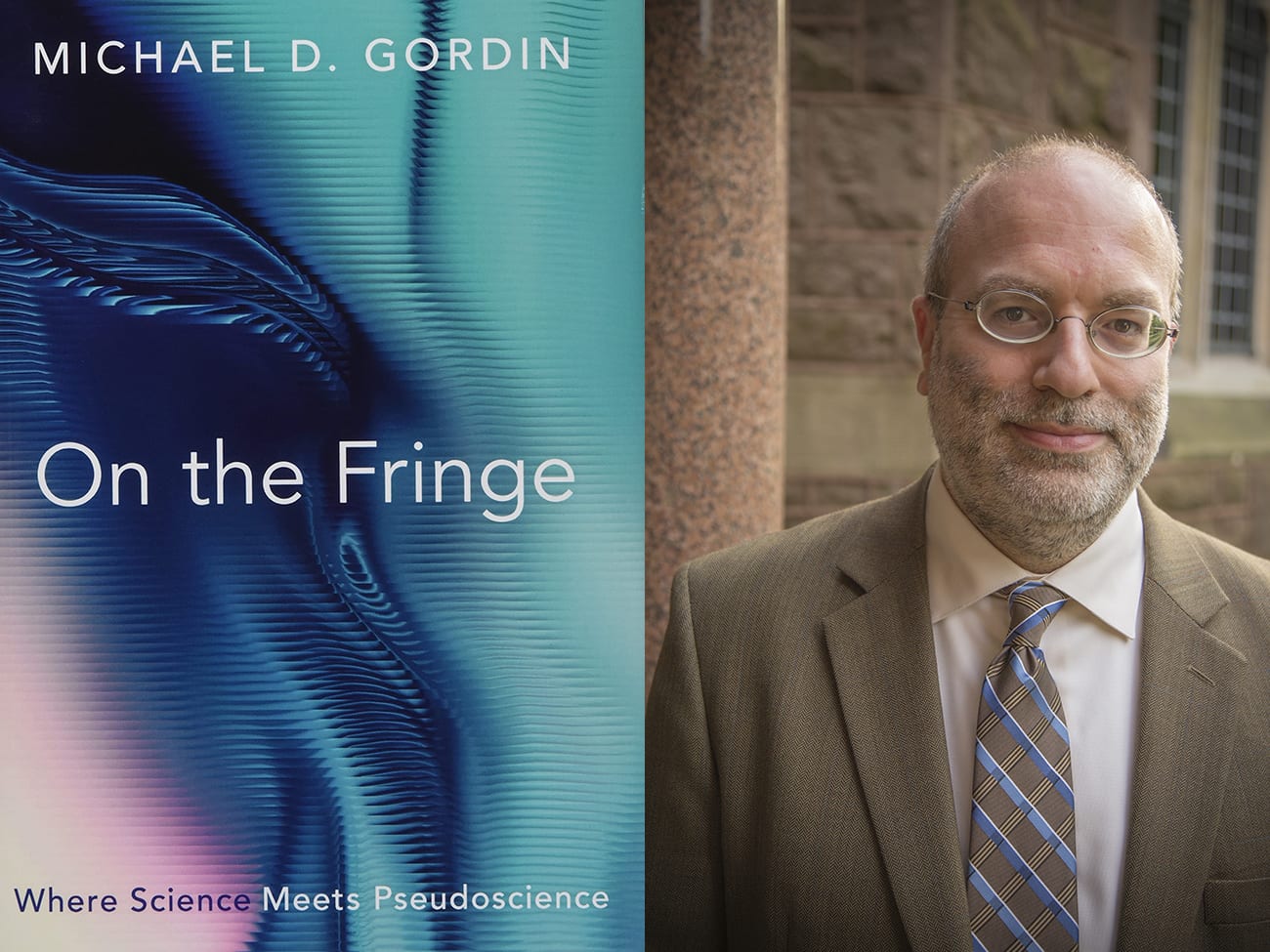Michael D. Gordin is Rosengarten Professor of Modern and Contemporary History, Professor of History, and Director of the Society of Fellows in the Liberal Arts. His book “On the Fringe: Where Science Meets Pseudoscience” was published in April 2021 by Oxford University Press.
How did you get the idea for this project?
On the Fringe was born out of a class I have taught at Princeton for two decades now, in many incarnations — a Junior methods seminar, a graduate seminar, and finally an advanced undergraduate seminar called “History of Pseudoscience” (History 498). The goal of the course was to explore the historical development of science over the past three centuries by looking at what is usually taken to be its opposite: “fringe” knowledge claims, those doctrines that are designated as “pseudosciences” by the scientific establishment. We studied a wide variety of cases, ranging from alchemy and mesmerism, to eugenics and ESP research, to more difficult cases like acupuncture, which has moved in and out of the fringe over time. Since my days in middle school, I have found these kinds of ideas — which seem so much like science but are always missing something (but not always the same thing!) — to be enormously interesting, and I believed that this approach of looking at science and pseudoscience together would be interesting to more than just the twelve students in my seminar. A short book on this topic, containing a wealth of historical examples and just a small amount of philosophy of science, seemed like a good way to introduce these issues to readers.
How has your project developed or changed throughout the research and writing process?
The book was designed for a series at Oxford University Press with very strict constraints, the most important of which is that it could be no longer than 35,000 words — which is not long at all. In 2012, I published a book called The Pseudoscience Wars, which focused on the fringe theories of one individual, Immanuel Velikovsky, a name few still remember. He developed and promoted a very popular theory about the connection between cosmic catastrophes and ancient mythology and history, from the publication of his bestseller Worlds in Collision in 1950 until his death — in Princeton, across the street from where I live now — in 1979. The Pseudoscience Wars was about three times the length of On the Fringe, and of much narrower scope. How was I going to fit everything I wanted to cover in a general book like this one? The answer is obvious: I couldn’t. I began to organize the project around broader principles and categories, and focused the philosophical and sociological points as sharply as possible. I found the exercise quite challenging at first, but eventually the length constraint was quite freeing.
What questions for future investigation has the project sparked?
I am often asked whether fringe theories are on the rise now, and to be honest I don’t have a good answer to that. There are obviously many notions today that are picked out as pseudosciences by mainstream science — the COVID-19 pandemic has spawned its own special subset of fringe theories. Meanwhile, other things that used to be pretty “fringy,” such as UFO sightings, are in early summer of 2021 enjoying a certain degree of rehabilitation. (We’ll have to wait and see how that pans out.) My problem is how we might determine how popular fringe theories were in the past. Communication through social media platforms, YouTube, and blogs make disseminating your heterodox theory much easier than before. Earlier, we have many examples of underground publications, late night radio shows, and myriad individuals who simply developed their alternative cosmologies in notebooks at home. Those are all ephemeral sources, discarded by embarrassed relatives and neglected by archives. I would like to figure out a better way of taking a census over time of the denizens of the fringe. Another question is the interrelation among various theories. I’ve noticed that some doctrines which have no logical connection with each other tend to attract the same individuals. Why do certain theories “stack” with others?
Why should people read this book?
It is a truism these days that everyone needs to understand science. The challenge is that science is an extremely heterogeneous thing, encompassing a dizzyingly complex array of theories and practices that have changed and will continue to change dramatically over time. One way to think about the moving target of science is to approach it through that which it is most definitely not. Exploring how the fringes, the pseudosciences, have transformed historically offers a resonant, shadowy echo of the changes that were happening in the sciences. If that doesn’t convince you, I’ll add two other reasons: many of the theories in the book are pretty fascinating, and the text is quite short.
Learn more about other publications by Princeton University faculty in the humanities by exploring our Faculty Bookshelf.
















